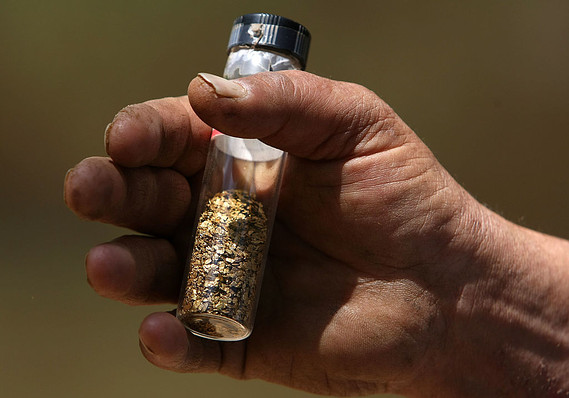
Using gold-flecked trees to reveal a shiny secret below ground has been part of mining lore — and actual biogeochemical study — since at least the 1940s. But it’s never been a particularly practical way to prospect.
Now, the tree-testing method in Australia is holding up against surface and groundwater analysis in at least a few samples and has major exploration firm, Marmota Ltd., picking up where the country’s national science agency, known as CSIRO, left off, the Economist reported.
Said one mining executive of increasingly trusting the trees:
“The usual calcrete [surface sample] testing was saying ‘Don’t drill here’ but the tree sampling was saying ‘Drill here.’”
It’s known that deep tree root systems in mostly dry areas can pick up traces of gold, and elements associated with gold GCM19, -0.38% deposits, such as antimony and bismuth, in underground water and carry them up into the foliage. Some trees even break down soil to extract mineral nutrients, which shows up in their leaves. That’s the fairly obvious part. What’s more mysterious is whether more time-consuming and expensive dirt samples or borehole water samples are always needed to verify the traces of the metal in the trees, and if tests from the various methods do less to confirm and more to confuse, the article said.
Sampling is no easy task: Different trees accumulate gold in different ways, so exactly the same species must be sampled across each site for valid comparisons, the Economist reported. The Acacia is one of the trees of choice, but Australia has about 1,000 Acacia species alone. What’s more, the degree to which elements accumulate in leaves varies with the seasons.
Yet in proof-of-principle studies over the last few years, Nathan Reid and colleagues at CSIRO have shown that biogeochemical prospecting closely tallies with the surface and groundwater analyses. So the miner Marmota MEU, +0.00% put the tree-specific method to the test at its Aurora Tank site, about 50 kilometers from the highly productive Challenger mine in South Australia.
The trees do talk: Marmota hit a five-meter-thick vein of 27 grams of gold per metric ton more than 30 meters below the surface and a one-meter-thick inner layer as dense as 105 grams per metric ton. (Five grams per metric ton is considered high-grade.)
Further exploration to follow, they’ve said.








